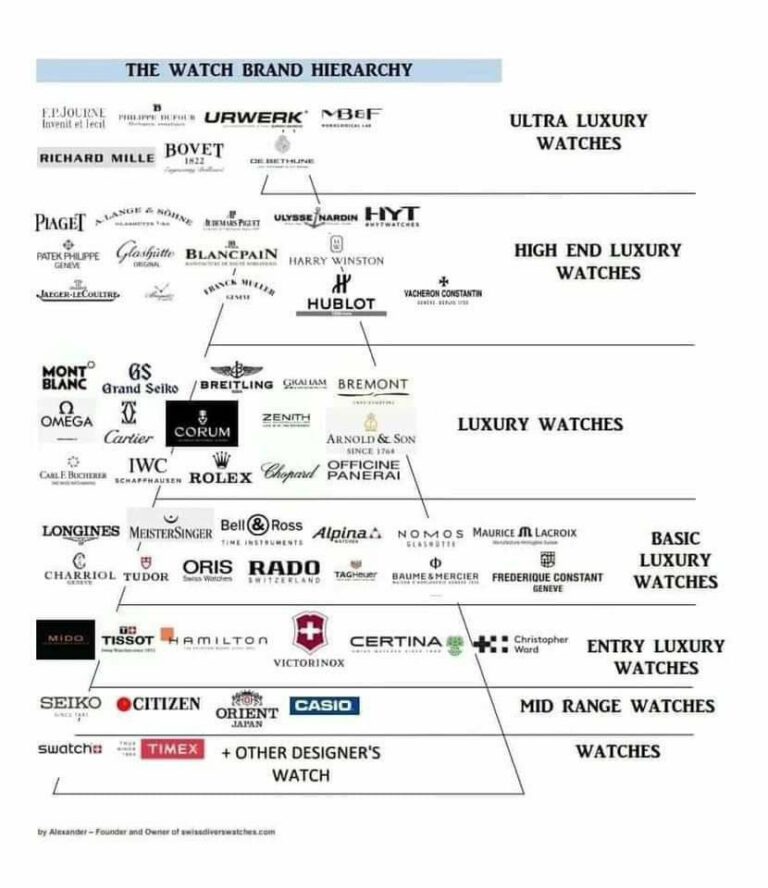The Quest for Perfect Car Audio: Unveiling the Best Car Speaker Brands
The Quest for Perfect Car Audio: Unveiling the Best Car Speaker Brands cars.truckstrend.com
For many, the daily commute or a long road trip is transformed by the power of music. Yet, the factory-installed audio systems in most vehicles often fall short, delivering flat sound, muddy bass, and distorted highs. If you’re tired of enduring lackluster audio and dream of a soundstage that rivals a live concert, upgrading your car speakers is the most impactful step you can take.
But with a vast ocean of brands and models, choosing the right car speakers can feel overwhelming. This comprehensive guide will navigate you through the world of automotive audio, highlighting the best car speaker brands renowned for their quality, performance, and innovation. We’ll delve into what makes a great speaker, what to look for when buying, and provide actionable insights to help you achieve the car audio experience you’ve always wanted.
The Quest for Perfect Car Audio: Unveiling the Best Car Speaker Brands
Beyond the Basics: Understanding Car Speaker Types
Before diving into specific brands, it’s crucial to understand the fundamental types of car speakers available. This knowledge will empower you to make informed decisions based on your audio goals and budget.
Coaxial (Full-Range) Speakers
Coaxial speakers, also known as full-range speakers, are the most common and often the easiest to install. They integrate all the necessary speaker components – woofer, tweeter, and sometimes a mid-range driver – into a single unit.
- Woofer: Handles low-frequency sounds (bass).
- Tweeter: Handles high-frequency sounds (treble).
- Mid-range (optional): Handles mid-frequency sounds (vocals, instruments).

Pros:
- Simplicity: Easy to install as they fit into existing speaker locations.
- Affordability: Generally less expensive than component systems.
- Space-saving: Compact design requires less mounting depth.

Cons:
- Sound Staging: Can offer less precise sound imaging as all frequencies originate from a single point.
- Compromise: Tweeter placement is fixed, which might not be ideal for optimal sound dispersion.

Component Speakers
Component speaker systems separate the individual speaker elements: woofers, tweeters, and external crossovers. This allows for more flexible installation and superior sound quality.
- Woofers: Mounted in the door or kick panels.
- Tweeters: Mounted separately, often higher up (e.g., A-pillars, dashboard) for better sound imaging.
- External Crossovers: Filters the audio signal, sending appropriate frequencies to each speaker driver, ensuring optimal performance and protecting the drivers.
Pros:
- Superior Sound Quality: Better separation of frequencies leads to clearer, more detailed sound.
- Excellent Sound Staging: Independent tweeter placement allows for a more realistic and immersive soundstage, making it feel like the music is coming from in front of you, not just your feet.
- Better Power Handling: Generally built with higher quality materials and can handle more power.
Cons:
- Complexity: More challenging to install due to separate components and wiring.
- Cost: Significantly more expensive than coaxial speakers.
- Installation Space: Requires more planning and space for mounting individual components and crossovers.
Which Type is Right for You?
If you’re looking for a simple, affordable upgrade that delivers noticeable improvement over factory speakers, coaxial speakers are an excellent choice. If you’re an audiophile seeking the best possible sound quality, detail, and sound staging, and are willing to invest more time and money in installation, component speakers are the way to go.
Decoding the Specs: What to Look for in Car Speakers
Understanding the technical specifications is crucial to selecting speakers that will perform optimally in your vehicle.
-
Speaker Size & Fitment: This is perhaps the most critical factor. Speakers come in standard sizes (e.g., 6.5-inch, 6×9-inch, 5.25-inch, 4-inch). Always check your car’s speaker sizes before purchasing. Many online retailers offer vehicle fitment guides. Ensure the mounting depth is also compatible.
-
Power Handling (RMS vs. Peak):
- RMS (Root Mean Square) Power: This is the continuous power a speaker can handle reliably. This is the most important rating to consider. Match your speaker’s RMS power handling to your amplifier’s (or head unit’s) RMS output.
- Peak Power: The maximum power a speaker can handle for a very brief moment without damage. This number is often inflated and less useful for real-world performance assessment.
-
Sensitivity (dB): Measures how efficiently a speaker converts power into sound. A higher sensitivity rating (e.g., 90 dB vs. 85 dB) means the speaker will play louder with the same amount of power. If you’re running speakers off your head unit’s power, look for speakers with higher sensitivity (90 dB or above). If you have a powerful external amplifier, sensitivity is less critical.
-
Impedance (Ohms): Represents the electrical resistance of the speaker. Most car speakers are 4-ohm. Ensure your speakers’ impedance matches your amplifier’s capabilities. Mismatched impedance can lead to poor performance or damage to your amplifier.
-
Frequency Response (Hz-kHz): This indicates the range of frequencies a speaker can reproduce. A wider frequency response (e.g., 40 Hz – 20 kHz) generally means the speaker can reproduce more of the audible spectrum, from deep bass to crisp highs.
-
Cone & Tweeter Materials:
- Woofer Cone Materials: Affect sound characteristics. Polypropylene is common and durable, often reinforced with mica or carbon fiber for stiffness. Paper cones offer warm sound but are less durable. Woven glass fiber or carbon fiber cones offer excellent stiffness and responsiveness for premium sound.
- Tweeter Materials: Affect the brightness and smoothness of high frequencies. Silk or textile tweeters produce a warmer, smoother sound. Metal (aluminum, titanium) tweeters often produce brighter, more detailed highs, but can sometimes sound harsh if not properly tuned.
The Elite List: Top Car Speaker Brands Reviewed
Here’s a rundown of the best car speaker brands, each offering unique strengths and catering to different budgets and audio preferences.
1. Pioneer
- Reputation: A household name in car audio, Pioneer is renowned for its reliability, innovation, and wide range of products that cater to every budget.
- Known For: Offering excellent value, balanced sound, and consistent performance across their coaxial and component lines. Their TS-A and TS-G series are popular choices for factory upgrades.
- Target Audience: Everyday drivers looking for a significant upgrade over factory speakers without breaking the bank, and those who appreciate balanced, clear sound.
2. JBL
- Reputation: A legendary audio brand with a strong presence in professional sound, home audio, and car audio. Known for powerful, clear sound and robust build quality.
- Known For: Strong bass response, clear highs, and excellent overall sound balance. Their Club, Stage, and Stadium series offer great performance for their price points. Many models feature Plus One+ woofer cones for increased surface area.
- Target Audience: Bass enthusiasts and listeners who enjoy a dynamic, energetic sound signature.
3. Kenwood
- Reputation: Another long-standing giant in car electronics, Kenwood offers a comprehensive range of audio products known for their solid performance and user-friendly features.
- Known For: Delivering clear, crisp sound with good bass output, often at competitive prices. Their Sport Series and Excelon lines are well-regarded for their clarity and durability.
- Target Audience: Budget-conscious buyers seeking reliable performance and clear audio for various music genres.
4. Kicker
- Reputation: A brand synonymous with power, bass, and high SPL (Sound Pressure Level). Kicker is a favorite among those who love to feel their music.
- Known For: Robust construction, high power handling, and impressive bass response, even from smaller drivers. Their DS, CS, and KS series offer different levels of performance.
- Target Audience: Bass heads, SPL competitors, and anyone who wants their music loud, clear, and impactful.
5. Alpine
- Reputation: A premium brand known for its commitment to high-fidelity sound, advanced technology, and sleek designs.
- Known For: Exceptional clarity, precise sound imaging, and excellent mid-range detail. Their Type-S, Type-R, and Type-X series are highly acclaimed for their performance and audiophile-grade sound.
- Target Audience: Audiophiles and discerning listeners who prioritize clear, accurate sound reproduction and are willing to invest in quality.
6. Rockford Fosgate
- Reputation: A powerhouse in car audio, Rockford Fosgate is celebrated for its rugged construction, high power handling, and ability to deliver impactful bass.
- Known For: Powerful, dynamic sound with a strong emphasis on bass. Their Prime, Punch, and Power series offer escalating levels of performance and build quality, designed to handle serious power.
- Target Audience: Enthusiasts who want loud, robust sound with plenty of bass, suitable for high-power systems.
7. Infinity
- Reputation: A brand under the Harman International umbrella (along with JBL), Infinity is known for its innovative designs and clear, balanced sound.
- Known For: Unique features like their "Plus One+" woofer cone technology for increased cone area and efficiency, and "Edge-driven" textile dome tweeters for smooth highs. Their Reference and Kappa series offer excellent clarity and detail.
- Target Audience: Listeners who appreciate detailed, natural sound with good imaging, and those looking for efficient speakers.
8. Polk Audio
- Reputation: Originally a respected home audio brand, Polk Audio has successfully transitioned its expertise into the car audio market, offering balanced and natural sound.
- Known For: Delivering clear, accurate, and warm sound reproduction. Their DB+ series is particularly popular for its marine certification, making them ideal for boats and vehicles exposed to the elements, in addition to great everyday performance.
- Target Audience: Those seeking a natural, balanced sound signature and good value, especially for marine or outdoor applications.
9. JL Audio
- Reputation: Considered a top-tier brand, JL Audio is synonymous with high-performance, precision engineering, and incredible sound quality, particularly in the low-frequency realm.
- Known For: Unrivaled bass performance from their subwoofers, and equally impressive clarity, detail, and sound staging from their component speakers. Their C1, C2, C3, and C5 series cater to various levels of audiophile demands.
- Target Audience: Serious audiophiles and enthusiasts who demand the absolute best in sound quality and are willing to invest significantly.
10. Focal
- Reputation: A French company with a global reputation for producing some of the world’s finest high-fidelity audio equipment, including car speakers.
- Known For: Exquisite craftsmanship, unparalleled sound accuracy, breathtaking detail, and precise sound staging. Focal speakers are an investment in a true audiophile experience, with series like Access, Performance, and Utopia setting benchmarks.
- Target Audience: Discerning audiophiles and connoisseurs seeking the ultimate car audio experience, where sonic purity and detail are paramount, regardless of cost.
Installation & Optimization: Getting the Most Out Of Your Speakers
Even the best speakers won’t sound their best if not installed correctly and integrated into an optimized system.
-
DIY vs. Professional Installation:
- DIY: Possible for coaxial speakers with basic tools and some mechanical aptitude. Numerous online tutorials exist.
- Professional: Recommended for component systems due to complex wiring, crossover integration, and optimal tweeter placement. A professional installer can also perform sound deadening and system tuning.
-
Sound Deadening: Applying sound deadening material (e.g., Dynamat, Kilmat) to your car doors and other panels is crucial. It reduces road noise, stops vibrations, and improves bass response by creating a more stable enclosure for your speakers. This is often as impactful as the speaker upgrade itself.
-
Adding an Amplifier & Subwoofer:
- Amplifier: While aftermarket speakers will sound better even with just a head unit, a dedicated external amplifier will unlock their full potential, providing cleaner power, more volume, and better dynamics. Match the amp’s RMS output to your speakers’ RMS rating.
- Subwoofer: For truly deep, impactful bass, a dedicated subwoofer is essential. It allows your main speakers to focus on mid-range and high frequencies, leading to overall clearer sound.
-
System Tuning: Once everything is installed, proper tuning of your head unit, amplifier, and crossover settings is vital. This involves setting gain levels, adjusting equalization, and setting crossover points to ensure each speaker plays its intended frequency range without overlap or distortion. Professional tuning can make a world of difference.
Estimated Price Guide for Popular Car Speaker Brands
This table provides estimated price ranges for a pair of common 6.5-inch speakers (coaxial or component where noted). Prices can vary significantly based on specific model, size, features, and retailer.
| Brand | Type (Typical 6.5" Pair) | Estimated Price Range (USD) | Key Feature / Known For |
|---|---|---|---|
| Pioneer | Coaxial / Component | $50 – $200 | Reliable, good value, balanced sound |
| JBL | Coaxial / Component | $60 – $250 | Strong bass, clear sound, Plus One+ cones |
| Kenwood | Coaxial / Component | $50 – $200 | Clear sound, good value, durable |
| Kicker | Coaxial / Component | $80 – $300 | Powerful, strong bass, high power handling |
| Alpine | Coaxial / Component | $100 – $400 | High clarity, precise sound staging, premium build |
| Rockford Fosgate | Coaxial / Component | $80 – $350 | Robust, powerful, impactful bass |
| Infinity | Coaxial / Component | $70 – $280 | Clear, detailed, efficient (Plus One+ cones) |
| Polk Audio | Coaxial / Component | $60 – $250 | Natural, balanced sound, often marine-certified |
| JL Audio | Component (higher end) | $200 – $800+ | Exceptional clarity, incredible bass, audiophile-grade |
| Focal | Component (premium) | $300 – $1500+ | Unparalleled accuracy, exquisite detail, high-end audiophile |
Note: The "Estimated Price Range" reflects common models for a pair of 6.5-inch speakers. Entry-level models may be cheaper, and high-end component sets from brands like JL Audio or Focal can easily exceed $1000.
Frequently Asked Questions (FAQ)
Q1: Do I need an amplifier for aftermarket speakers?
A1: While aftermarket speakers will sound better than factory ones even off your head unit’s power, a dedicated amplifier is highly recommended. It provides cleaner, more powerful, and consistent wattage, allowing the speakers to perform at their full potential, deliver more dynamic range, and play louder without distortion.
Q2: What’s the difference between coaxial and component speakers?
A2: Coaxial speakers combine all drivers (woofer, tweeter) into a single unit, making them easy to install. Component speakers separate the woofer, tweeter, and an external crossover, allowing for better sound staging and clarity due to optimal tweeter placement and precise frequency allocation.
Q3: Can I install car speakers myself?
A3: Yes, installing coaxial speakers can be a DIY project with basic tools and careful attention to wiring diagrams. Component speaker installation is more complex due to separate components and external crossovers, often benefiting from professional installation.
Q4: How do I know what size speakers fit my car?
A4: Check your car’s owner’s manual, use online vehicle fitment guides provided by speaker manufacturers or retailers, or physically measure your existing speakers. Don’t forget to check mounting depth clearance.
Q5: What is RMS power?
A5: RMS (Root Mean Square) power is the continuous power a speaker can handle reliably over time. It’s the most important power rating to consider when matching speakers to an amplifier, as it indicates real-world performance capability, unlike "peak power."
Q6: Is higher sensitivity better for car speakers?
A6: Yes, generally. A higher sensitivity rating (e.g., 92 dB) means the speaker will produce more sound output (be louder) with the same amount of power compared to a speaker with lower sensitivity (e.g., 88 dB). This is particularly beneficial if you’re powering speakers directly from your car’s head unit without an external amplifier.
Conclusion: Drive with Superior Sound
Upgrading your car speakers is an investment in your daily driving enjoyment. By understanding the different types of speakers, decoding their specifications, and choosing from the reputable brands listed above, you can transform your vehicle into a personal concert hall. Whether you prioritize booming bass, crystal-clear vocals, or an immersive soundstage, there’s a perfect set of speakers waiting for you. Remember that proper installation and system optimization are just as crucial as the speakers themselves. So, take the leap, choose wisely, and prepare to rediscover your favorite music on every journey. Drive with superior sound and let your soundtrack truly move you.





